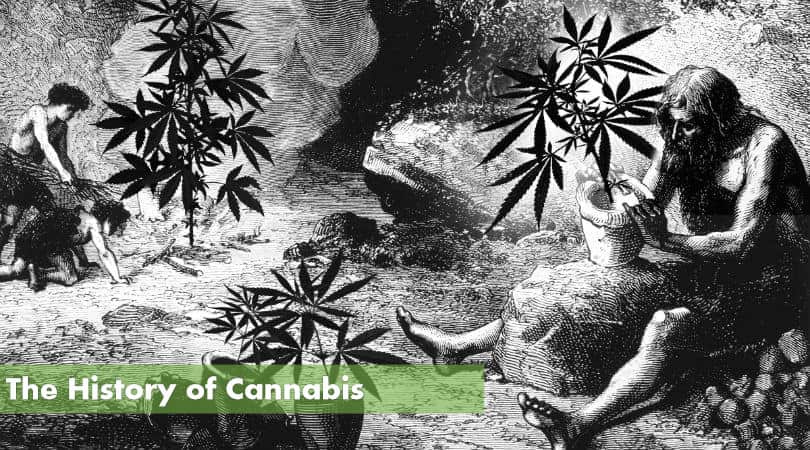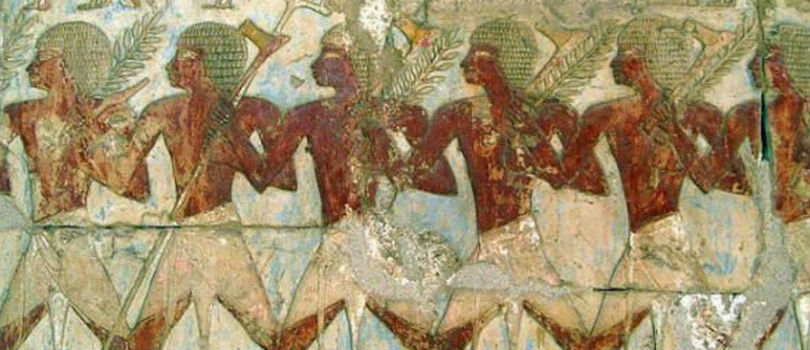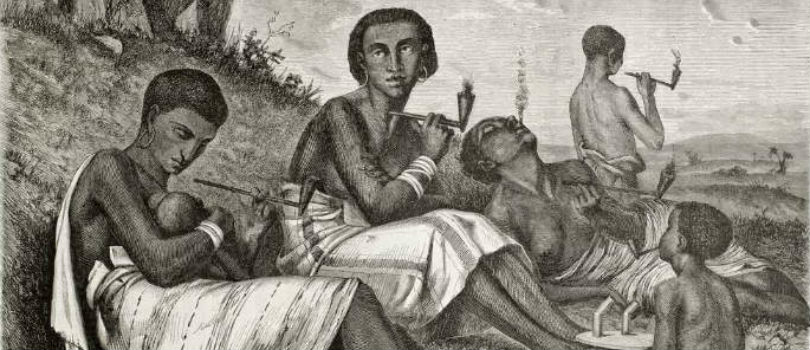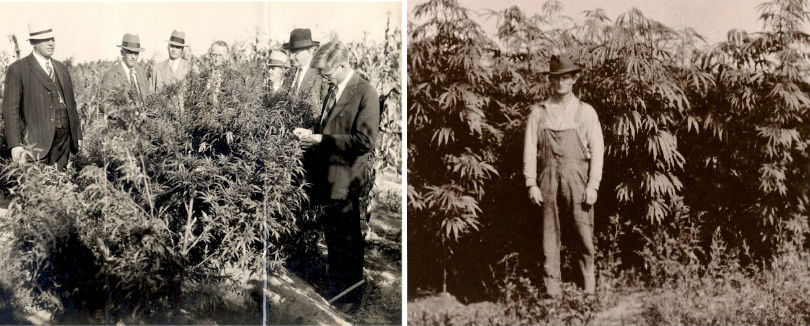The History of Cannabis
The Complete World History of Cannabis. Have you ever wondered about the origins of cannabis How long have people been using marijuana? For what purposes? Here are all the answers to your most pressing questions about the history of cannabis, beginning about 10,000 years ago.
Have you ever wondered about the origins of cannabis How long have people been using marijuana? For what purposes? Here are all the answers to your most pressing questions about the history of cannabis, beginning about 10,000 years ago.
The Earliest Mentions & Use of Cannabis in China
One of the first – if not the first – reference to weed was back in China in 2900 BC. It was around that time that Chinese Emperor Fu Hsi made mention of Ma, which is the Chinese term for cannabis. The Emperor mentioned cannabis as a popular medicine with both yin and yang.
Then, according to Chinese legend, Chinese Emperor Shen Nung was the first person to use marijuana as medicine in 2700 BC. Nung, who is also known by the first name Chen, is thought to be the Father of Chinese medicine. As per this legend, Nung also discovered ephedra and ginseng.
Archeologists have dug up remains in an ancient village in China that appear to support the earliest recorded use of marijuana there. The remains found included small pots with cannabis fibre (hemp) decorating them that were more than 10,000 years old. The hemp was also used to make items such as fishing nets, rope, clothes, and paper. The Chinese people are thought to have invented hemp paper. Cannabis seeds were used for food, as was cannabis oil, in China.
The Chinese used cannabis as medicine in many different cases under the belief that its properties would help with issues such as gout, constipation, and fatigueas well as being an anesthetic for surgery. Not all Chinese people supported the use of cannabis, though, perhaps because it was thought to contain yin and only things containing yang were looked upon positively. Marijuana was used less for its psychoactive properties than for hemp cultivation.

Cannabis in Central Asia
Western historical scholars often consider the Scythians in Siberia, North Central Asia to be originators of cannabis around the 7th century BC. Marijuana was a key part of the Scythian cult of the dead in which they paid tribute to deceased leaders by honoring their spirits and memories. Cannabis seeds were also widely used in everyday life by Scythian men and women; weed was smoked for pleasure and used in religious rituals too.
The Spread of Cannabis to Europe & America
In 2000 BC, Korean farmers bought the cannabis plant from the people of ancient China, as per the book “The Archeology of Korea.” The weed seeds were planted across Southern Asia, and marijuana began to be used in India. At this time, it also spread across Europe, the Middle East, the Ukraine, and Southeast Russia.
German tribes then appear to have brought the cannabis to Germany and Anglo-Saxons brought it to Britain in around 1200 AD. At the same time, cannabis was spreading across Africa and the Middle East and then to South America and the Caribbean (circa 1800 AD).
During the Mexican Revolution, marijuana seeds found their way to North America via Mexico. Mexican immigrants introduced Americans to the habit of recreational weed, rather than the prevailing medical use, around 1910 AD.
In 1753, botanist Carolus Linnaeus of Sweden cataloged two types of cannabis plants, the cannabis sativa, and cannabis indica. Throughout the 1800s, in Brazil, marijuana was widely used by the poor for clothing, spice, and energy, as well as for medicine. Cannabis was later banned in the 19th century in Rio de Janeiro.
In the mid-1800s, cannabis became more popular in Jamaica after Indian laborers came to the region and taught their knowledge of ganja or cannabis to the black working class. The Rastafarian movement began to take form in the early 1930s. Ganja became a symbol for the movement, and use of the plant took on a religious context. Many Rastafarians remain Ganja farmers today, and ganja is still symbolic of the group’s ideologies.
In the early 1970s, cannabis cultivation was huge in Afghanistan. Huge fields were filled with plants grown from weed seeds. By 1972, law officials there had begun efforts against hashish.

Early History of Cannabis in the United States
The Pure Food and Drug Act came into effect in the U.S. in 1906, which regulated the labeling of cannabis, alcohol, opiates, cocaine, and other products. In 1916, scientists in the United States Department of Agriculture or USDA turned hemp pulp into paper and scientists Jason Merrill and Lyster Dewey concluded that it was a more favorable process than pulp wood.
In 1915, Utah was the first state to make cannabis illegal for non-medical use. By 1941, 28 other U.S. states had followed suit. The U.S. government appeared to be in the same frame of mind as the U.K., where cannabis was banned for personal use in 1928.
In 1919, as per the 18th Amendment to the U.S. Constitution, the manufacturing, sale, and transport of alcohol was made illegal. As a result, the use of marijuana became a popular alternative. That is until it began to be banned as well for recreational use in many states.
The banning of cannabis was also happening in Greece, where ruler Ioannis Metaxas strengthened penalties for hashish smokers. Production of hashish was deemed illegal in Lebanon in 1926, and the same activity was deemed illegal in 1935 in Turkestan.
The propaganda film Reefer Madness was released in the U.S. in 1936. The movie was designed to scare away young Americans from using cannabis. The following year, the Marijuana Tax Act was passed into law, making weed illegal. Then, the year 1941 was when cannabis was taken off the U.S. Pharmacopoeia and was stripped of its medicinal use status. Penalties for drug use, including cannabis, intensified across the nation in 1952 with the passing of The Boggs Act, which amended the Narcotics Control Act.
U.S. History of Marijuana: The 1970s, 1980s & 1990s
The early ’70s was when the first evidence appeared to support cannabis in helping glaucoma sufferers. Shortly after, the Shafer Commission elected by America’s Nixon government encouraged the re-legalization of cannabis. This suggestion was largely ignored. Proposition 19 in California, which called for weed legalization, did not receive the majority vote.
By the late 1970s, U.S. President Carter was asserting decriminalizing cannabis for those caught with under an ounce of the drug. When President Reagan came into office, he signed the Anti-Drug Abuse Act, with raised federal sanctions for possessing and selling drugs, in opposition to what Carter had strived to achieve. This move by Reagan in 1986 was the beginning of the U.S. “war on drugs.”
Meanwhile, the 1980s was a busy time in Morocco, which was one of the biggest producers and exporters of hashish. By 1987, the government there was fighting against cannabis cultivation, particularly in the Rif Mountains. As for Amsterdam, the equipment to locally produce weed was introduced there in the mid-’90s and marijuana became a staple soon afterward in coffee shops there.
Major strides were made in 1996 in the U.S. toward recognizing the medicinal properties of marijuana. This year was when California was first American state to re-legalize medicinal cannabis for patients with certain illnesses, such as cancer and AIDS. Arizona then followed suit later the same year, with similar laws passed by many other states afterward, including Oregon, Washington, Colorado, Washington, C.C., New Mexico, and Vermont.
But a step backward toward relaxing marijuana penalties came when President Clinton took office and continued the “war on drugs” begun by Reagan. Arrests and sanctions were given to medical marijuana providers and patients in many states, including California.

The 21st Century & Marijuana
In 2001, Canada’s federal laws changed in support of medical cannabis. Within three years, Canada was the first country ever to approve medical marijuana across its entire country. This activity was vastly different back in the United States where President G.W. Bush was pushing the “war on drugs” in California, with a focus on doctors prescribing medical weed and patients receiving it.
Strides to finally end the two-decade U.S. war on drugs came with President Obama, who asserted in 2009 that individual drug use is a public health issue rather than being a matter of the U.S. Justice Department. When California Proposition 19 resurfaced in 2010, it was only narrowly beaten, by a much narrower margin than before, illustrating a shift in U.S. voter’s perceptions of marijuana use.
Cannabis became legal for recreational use in Colorado State and Washington State in 2012, with no setbacks to medical marijuana use either. Seattle then began the first legal pot shop in 2014 to sell marijuana over the counter for recreational use.
Since then, many American states have legalized recreational cannabis; the next two states to do so were Alaska and Oregon. However, the U.S. federal government still classifies marijuana as a Schedule 1 drug, along with LSD and heroin, suggesting it has a high risk of abuse and addiction, no accepted medical use, and no safe level of use.
Concluding the History of Cannabis
The cannabis plant traveled far and wide, impacting laws across the world during its intricate history. In pre-modern times, marijuana seeds were grown for their medicinal and spiritual properties. It was legal and, indeed, a very important crop. As an examination of world history reveals, the idea of weed as “evil” is a fairly recent notion.
